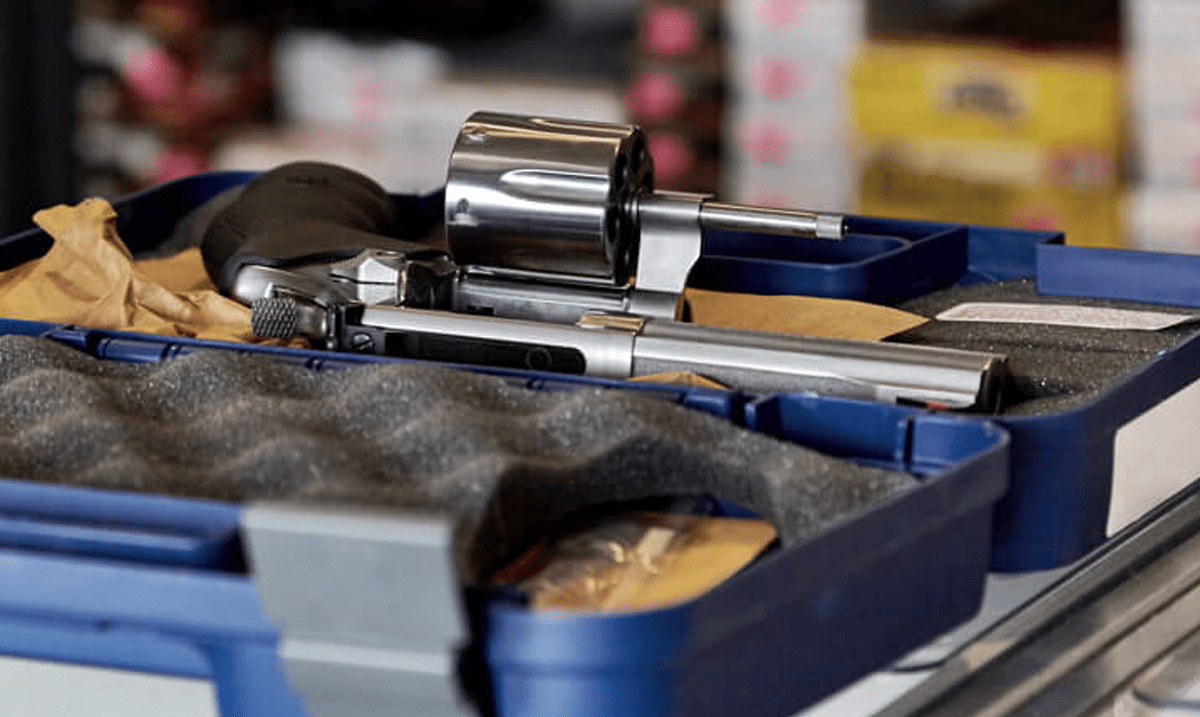 Back to News
Back to News
August 17, 2017
How to Get Started In 3-Gun
Target shooting sports are enjoying a resurgence of popularity across the country these days. But while many people find a sport that “rings their bell,” so to speak, and generally dedicate themselves to that particular activity, there are some who ask the question, why limit yourself to just one gun or one discipline? Why not become proficient with a shotgun on clays, a pistol on steel or paper and the MSR (modern sporting rifle, or AR-platform rifle) on the 100-yard line?
For those who want to master all and test the limits of excitement at the same time, the sport of 3-gun is the one for you.
When looking at traditional target competitions, targets are often static (un-moving), square to the shooter and, often for the younger generations, rather boring. Today, competitions like 3-Gun are anything but that. Creative and exciting, the action is fast and the shooting is heart-racing for both the competitor and the spectators. Indeed, 3-gun has injected a shot of adrenaline to the shooting sports that has propelled it into a combination of a drag race and an obstacle course involving multiple gun disciplines. Best of all, you can participate in 3-gun, even excel in 3-gun, without tricked-out special equipment or being fit enough to compete in an Ironman triathlon. In fact, some of the kings and queens of 3-gun are just average everyday shooters who enjoy popping a few primers, good eats and lots of fun with friends.
What is 3-Gun?

3-Gun is best described as the “X Games” of the shooting sports. For the younger generation, it is better than any video game and the most action they will likely ever experience without serving Uncle Sam in uniform. As the name implies, the sport of 3-Gun requires three different guns — a pistol, a shotgun and a rifle. The course of fire is timed and you score points by shooting a variety of targets including cardboard silhouettes, clay pigeons and steel — but that’s not all.
Most other shooting sports like trap or skeet or high-power rifle, the course of competition and targets are at the discretion of the range officer or competition organizer. That’s right, each match director makes up the competition and so each 3-Gun match you shoot will be unlike the one you shot before and totally different from the next one on your match schedule. There may be shoot or no-shoot targets that could be either scoring bonuses or deductions. Some targets must be knocked down, while others, like steel, for instance, may activate another target. The course is scored by how many targets you hit, the accuracy of the shot on certain targets (cardboard), deductions for various penalties and, of course, the time you take to complete the course.
Gearing Up for 3-Gun

Believe it or not, you do not have to break the bank or sacrifice your kid’s college fund to enter the sport of 3-Gun. Attend a match to see what it’s all about, and you’re likely to find more than a few willing to loan you their guns for the day to get you started. Once the bug bites — and it will — with today’s prices, you can buy all three guns for less than $1,000. Typically, you would start with a modern sporting rifle (MSR) such as an AR-15, a shotgun (pump or semi-auto as you choose) and a handgun. The pistol can be a semi-auto or revolver, however the semi-auto will normally be the most advantageous choice. While 3-Gun can have an “anything goes” approach — I’ve even seen 3-Gun matches for muzzleloaders! — typically you are going to want to select a shotgun of 20-gauge or larger, a rifle chambered for .223 or larger and a pistol of 9mm or larger.
In addition to the firearms and the ammo needed to both practice and shoot matches, because you are going to mobile and shooting a fair number of rounds during matches (including stages that require you to reload), you’ll need spare magazines for your rifle and pistol, as well as a way to carry and easily access spare shotshells. Conventional thinking varies, but carrying spare shotshells is going to boil down to pouches on your belt or some type of chest carrier (or vest), but developing your system is half the fun, so pay attention to other shooters and get creative.
While most equipment is at the discretion of the shooters, safety is paramount. Eye and ear protection are, of course, mandatory, but that’s just the beginning. For instance, your pistol’s holster must cover the entire trigger guard. That holster also has to securely retain the firearm as you hustle through the course. Dropping a firearm during the competition will result in an immediate disqualification, so pay attention when selecting your equipment and choose those pieces that both protect your firearms and aid you in staying safe.
You might also like: 10 Ways to Celebrate National Shooting Sports Month
Shooting Classes or Divisions

Like most shooting sports, 3-Gun is broken down into different classes and divisions. Men shoot against men and ladies against other ladies. Age on either end of the spectrum may earn you a different competitive division as well, such as veteran or junior. Firearm choice is also important to leveling the playing field and these can generally be broken into four different classes. These classes will differ based on the tournament sponsor or director, but here’s an example that was taken from a local competition in which I recently participated.
- Limited — This is the division in which most “hobby” or new shooters competed, myself included, due to the equipment requirements. Simple is good and trust me, this will also be the most fun division you’ll ever get to shoot. In this division in the match I shot, competitors were allowed a single unmagnified optic on their rifle as well as iron sights, but not a bipod. No optics were permitted on the shotgun, which could be either a semi-auto or pump with an 8+1 round capacity. Shotguns with detachable magazines were not permitted. Handguns had to be primarily stock (in other words, out of the box from the factory and without fancy upgrades or accessories), and there was a magazine restriction that prevented overly long magazines. Some extensions were allowed, but these were limited.
- Tactical — Tactical was the most popular division in this particular 3-Gun competition I entered. Tactical often mimics the requirements of the average self-defense-oriented shooter most accurately. The primary difference between Limited and Tactical is that Tactical permits the addition of a magnified optic on the rifle.
- Heavy Metal — Competitors in Heavy Metal like to take advantage of the larger calibers, so there is a larger minimum caliber requirement. For instance, the rifle had to be 7.62×51 (.308 Winchester) or larger, and the rifle may only have iron sights only. The shotgun was required to be a 12-gauge pump with only iron sights (or no sights), and the handgun had to be chambered for .45 ACP or larger. No optic was allowed on the handgun, and there was a magazine restriction as well.
- Open – Open was where the “big kids” played. Most of the equipment restrictions were removed. For example, shotguns were modified to have long magazine extension tubes that hold more rounds, and optics were also allowed. Modifications to rifles and handguns in a wide variety are also allowed. Essentially, if it was deemed safe, your wallet was the only limit.
Your First 3-Gun Shoot
Most who are interested in starting 3-Gun will want to watch a competition first. 3-Gun Nation is a nationally televised series that will give you an idea. (It airs on the Sportsman Channel, and many episodes like this one can be viewed on YouTube). While the television show primarily focuses on the pros, it also highlights competitors at all stages of the competition, so viewing a couple episodes will give you a good representation of how the sport works. Also, check out the National Shooting Sports Foundation’s recommended ranges close to you at wheretoshoot.org. As part of NRA Sports, 3-Gun Nation also runs a national club series of matches.
At your first match, even if you attend as just a spectator, you’ll find plenty of other shooters, both new and experienced, ready to partner with a new shooting buddy or help a newcomer get their start the sport. Egos are low and the fun ratio is off the charts, and don’t be shy about singing out to a range officer that you are a new shooter. They will be happy to explain the course of fire, dos and don’ts, safety requirements and most likely a few tips that make you more successful and relaxed ensuring the best introduction possible.
Categories: BP Item, Featured, Shooting, Top Stories









